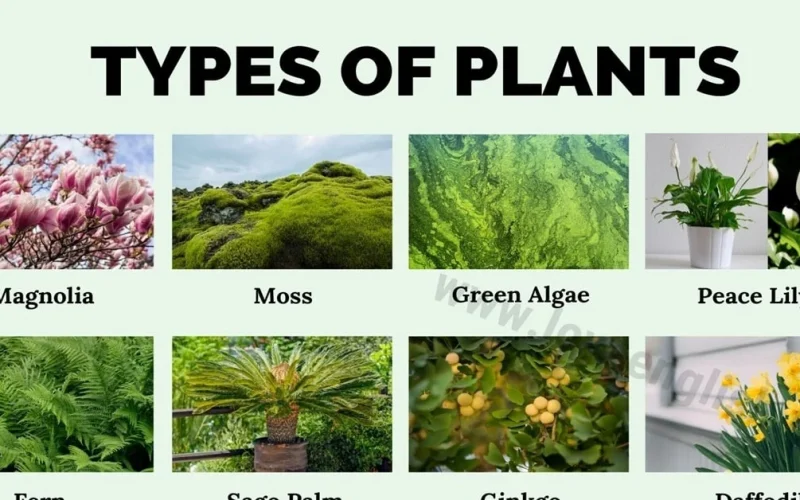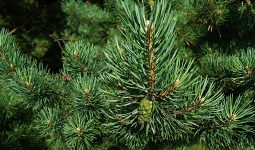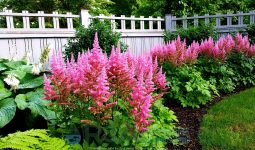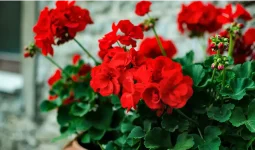Different types of plants can be found around us, and most of us are familiar with many species of plants that bloom, grow in our gardens, or eat.
Plants grow in a wide variety of environments around the world. Moss, Algae, and ferns are flowerless plants that flourish in moist and damp environments.
Other types of plants, such as blooming plants and trees, thrive in various settings and are necessary for survival.
Plantae is a kingdom that encompasses all types of plants. They are split into groups based on whether seed-bearing or non-seed-bearing plants.
Genera, families, and species classify plants. This sort of plant classification makes it easier to identify and study plants.
Their vascular system also determines the taxonomy of plants. Non-vascular plants, such as algae, are primitive or belong to a lower class of plants with basic tissue systems for internal water transport.
Furthermore, Shrubs, trees, herbs, and flowering plants contain intricate vascular tissue that transports moisture and nutrients throughout the plant.
This article will introduce you to the many different types of plants around the planet. You’ll also see shrubs, blooming plants, ferns, and a variety of other common plants.
Types of Plants Based on Size
Plants can be classified based on their size, one of the most critical areas of categorization. A plant’s growth is limited to the size it corresponds to, whether it’s little, medium, or large.
Please take a look at their various types based on the size category.
- Herbs: Herbs are the smallest of all the plants. Their fragile stems grow to a height of less than a foot or a few millimeters. They usually have fewer or no branches. These herbs are high in vitamins and minerals, making them essential for a healthy diet. Tomato, ginger, paddy, and other herbs are only a few examples.
- Shrubs are likewise not particularly large but more significant than the herbs, measuring nearly a meter in length and with solid stems. Rosemary, Cherry, Basil, and other shrubs are examples.
- Trees: As we all know, trees are the biggest plants with tough stems known as trunks. The branches of a tree’s trunk bear fruits, leaves, and nuts. Trees may reach tremendous heights, usually exceeding a meter. Mango, banana, and other fruit trees are examples of trees.
- Creepers are plants that creep on the ground and have very soft, thin, and lengthy stems. These creepers are unable to hold their weight or stand upright. Strawberry, sweet potato, and watermelon are just a few of the prominent creepers.
- Climbers: Climbers, like creepers, have thin, long, and weak stems that make it difficult to stand erect. Instead, they climb vertically through external supports and support their weight. Money plants, runner beans, grapevines, and other climbers are examples.
Types of Plants Based on Lifecycle
Age classification corresponds to growth and size, and is known as the most extended surviving beings on the planet.
Every plant completes its life cycle based on its surroundings, seed, and whether or not it received the necessary nutrition to grow.
We can divide them into three categories based on the life cycle category:
- Ephemeral: Ephemerals have a relatively brief lifespan. They grow, breed, and die in a few weeks and can be found practically anywhere because of their short life cycle. Examples of Ephemeral include Bloodroot, Red trillium, Great White trillium, etc. And they are not limited to a specific type of environment.
- Annual: As the name implies, the annual category refers to plants that only live for a year or less. Watermelon, Maize, Durum, and other famous examples of this type are commonly used to produce crops and agriculture.
- Biennial: Biennials’ biological cycle of growth, reproduction, and decay takes two years to complete. The first year is when they flower during these two years, and the second year is when they begin to die. Biennials flower in late spring; notable examples include Kalette, Hollyhock, Potato, Carrot, and others.
- Perennial: Perennials have the longest life span of all plants, and they continue to grow for several years. They do not have a specific age to complete their biological cycle. If they are not destroyed by nature or chopped down forcibly, they will continue to grow for hundreds of years. Strawberries, basil, mangoes, Cocoa, and cashews are examples of such plants.
Types of Plants Based on Seeds
Seeds are a plant’s foundation since the seed type determines how it grows.
Some seeds can be used as food for other living organisms, while others are primarily responsible for the growth of a new plant.
- Plants without seeds: Algae, mosses, ferns, and liverworts are examples. The wind disperses the spores produced by these unusual plant types. For example, sporangia, small structures containing spores, can be seen on the underside of fern leaves.
- Plant with seeds: Monocotyledons have a single cotyledon, as its name suggests, because their seeds are in one piece. Rice, orchids, bamboo, and other plants fall under this category. However, for dicotyledons, the seeds of these plants have two cotyledons, which can be split into two equal portions. Cashews, oaks, and other Dicotyledonous species are examples.
Vascular Plant
Vascular plants are green in color and have tissues specifically designed to move food, water, and minerals throughout the plant.
Xylem and Phloem are the names for these unique tissues. Furthermore, these plants can reach more extraordinary lengths.
Gymnosperms, Pines, Ferns, Angiosperms, Sunflowers, and Club Mosses are just a few examples.
Vascular plants can be found in deserts, land, and other environments. However, the sporophyte is the most dominant phase, and the Gametophyte is the second.
The leaves of vascular plants have distinct forms and serve a crucial role in photosynthesis, and the stomata have a role in gas exchange. Also, the multi-layered stem of vascular plants helps a vital function in delivering food and water.
Non-Vascular Plant
Plants that do not have an extended height are classified as non-vascular. They are low in stature and lack the necessary transportation system to move food, water, and minerals throughout the plant.
These plants don’t produce fruits, timber, and flowers. Hornworts, liverworts, and mosses are examples.
Furthermore, Non-vascular plants thrive in marshy, gloomy, and wet environments. Non-vascular plants have no xylem or Phloem.
In addition, Gametophyte is the dominant phase in non-vascular plants, and sporophyte is the second type.
Non-vascular plants do not have leaves and, as a result, serve no particular purpose. They also do not have a natural stem.
Types of Plants Based on Taxonomic Classification
Taxonomy is a classification system for plants based on genetic and evolutionary connections.
Plant taxonomy is a science discipline that constantly evolves as new species are discovered daily. Plants belong to the Kingdom Plantae.
The present plant classification system is based on evolutionary relationships among plants.
- Coniferophyta (Gymnosperms) is a group of plants that are mainly evergreen and native to the temperate zone. To date, we know over 700 species of gymnosperms. Gymnosperms are non-flowering, vascular plants that produce seeds instead of flowers and fruits. Pines, cycads, cedars, and other gymnosperms are common examples.
- Anthophyta(Angiosperms): They can become large trees, tiny shrubs, bushes, and plants. You can see Angiosperms (>250,000 species) all over the planet. This division encompasses most of the plants we see in our daily lives. Furthermore, you can distinguish Angiosperms by seeds, in this case, within the fruits. Monocotyledonous and Dicotyledonous are the two types. In addition, Mango trees, roses, jasmine, wedding gold, and other angiosperms are common examples.








